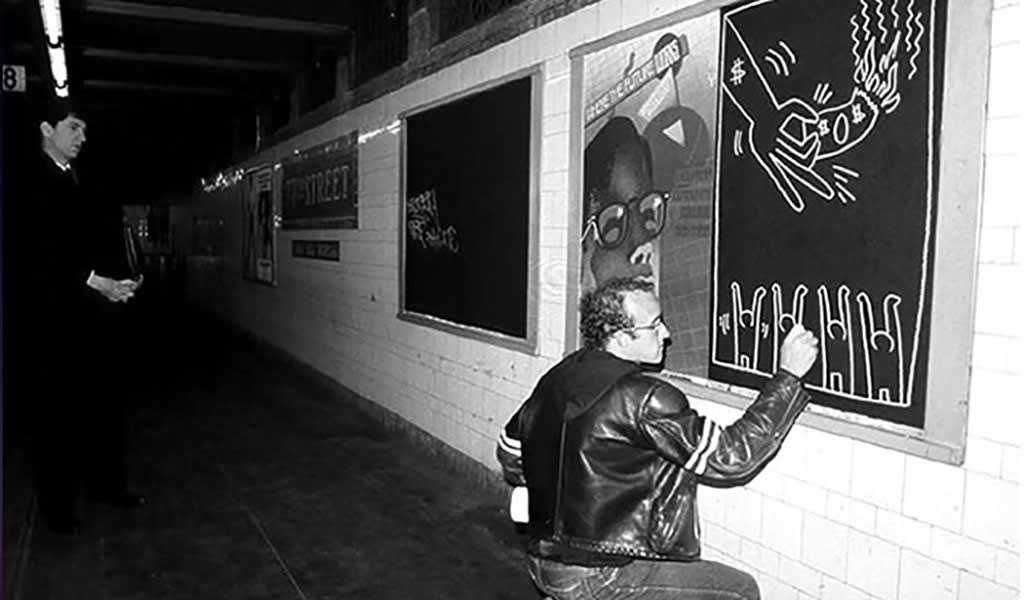
When Haring first moved to New York, he hails from Pennsylvania (the same state as his later friend and mentor Andy Warhol), the city was in the depths of bankruptcy and had to be bailed out by the Federal Reserve. Set to this backdrop, there was a great divide between the rich and poor, of social decay and mobility and the pressing social issues of the day. In the artworld, the division was most noticeable physically and financially through the divide of the fine art world of 57th street representing tradition and the establishment and the emerging artists of the Lower East Side inspired by the beat generation.
Prior to Haring and his other peers, it can be argued that graffiti was the domain of Street art gangs that inhabited “undesirable” areas of the city such as the South Bronx and Harlem. The style, fairly uniform, was provocative and historically confrontational and violent. Indeed, such was the prevalent explosion of graffiti around this era that the city spent $52m USD between 70 - 78 cleaning walls and the subway with the transit police arresting some 7,000 youths for graffiti or tagging.

Enter Haring whose distinct style was alien from the prevailing styles and inspired by a variety of artistic sources (mainly contemporary and outsider art) all the while rooted in the backdrop of hip hop and counterculture that washed the streets. Influenced by the art of his father who used to draw comic strips, the beatniks and, later, the use of psychedelic drugs, Haring's pictorial language was replete with influences of central American, African and Oceanic cultures. What’s more, Haring’s style allowed him to transcend ego and the self, unlike tagging which is inherently egoistic and focused on the individual executing the work.

A cultural activist, Haring’s connection to the street allowed him to forgo and break the conventional gallery system. His output, which totalled over 5,000 pieces of public art in the subways from 1980 -1985, saw him use the large black panels of matte paper that were without advertising posters as his canvas. Executed using chalk, he would hop out when he would spot one of these opportunities and draw fast (never loose), simplified images while being watched by an audience and hoping not to be arrested.
.jpg?mode=max)
Moving into the realms of performance art, audiences would watch and engage with him as he worked and ask him what his art meant. It was during this time that he perfected his well known images such as spaceships, radiant babies and barking dogs.
Through choosing the subway, Haring’s art was able to reach infinitely more people than through the traditional gallery model. Accessible to all, he would forgo topics of politics or sexual images that would later resurface in the domain of other works. Creating art for all, his subway period introduced him to new audiences and gained him immense popularity and fame.
For more information on any of the Keth Haring prints for sale, contact Andipa via sales@andipa.com or call +44 (0)20 7589 2371.